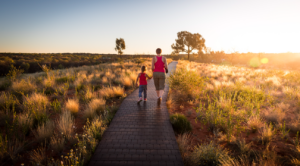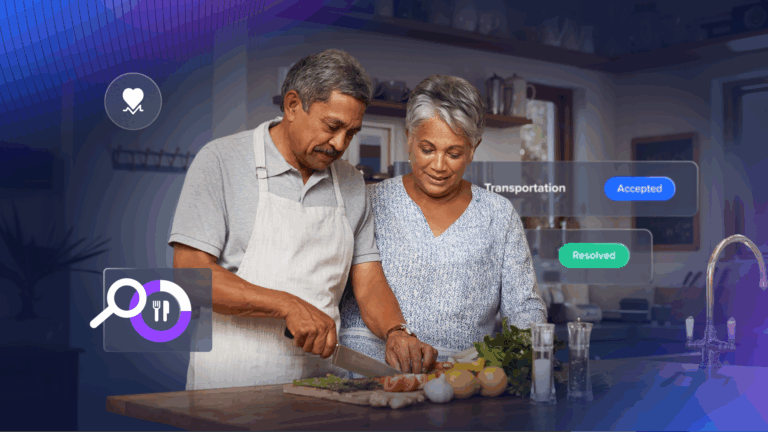
The State of Rural Healthcare: Unique Challenges and Innovative Solutions
Sabina Loscalzo
The state of health across the country is undergoing great transformation as communities collectively work together to address the disproportionate spending and poor health outcomes. Much of the conversation has been centered around urban communities and reasonably so, the urban/suburban population in the US accounts for about 81% of the total population, but that doesn’t mean that we can forget about our rural communities. Today, 46 million americans live in rural America and this population experiences high rates of chronic disease, higher mortality rates, and lower life expectancy than their urban counterparts. The health disparities that exists in our rural communities are growing, and the solution for addressing these disparities is a different one than what we are seeing in the rest of the country.
A report published by The National Advisors Committee on Rural Health and Human Services, defined 4 key social determinants that significantly impact rural populations more than urban ones. The 4 social determinants identified are: geography; wealth, income, and poverty; education and labor markets; and transportation. Not only do rural communities experience a lack of clinical resources as well as challenges in accessing those resources, but the social factors that impact one’s life are increasingly prohibitive for this specific population.
Dig a little deeper into the key challenges for each of the core social determinants that affect rural communities and it is clear that public, private, and nonprofit agencies need to be innovative and flexible when it comes to building programs to solve this issue in rural America.
Geography – The mortality rate in rural counties is 13 percent higher than in metro counties and residents of metro counties lived two years longer on average than residents of rural counties. Urban communities are geographically isolated which leads to a lack of basic health and human services. In addition to simply accessing services, studies are starting to show that depending on where people live there are already challenges that exist with regards to accruing wealth and amenities to access physical activity.
Wealth, income, and poverty – From 2000- 2010 urban counties saw an increase of residents living in poverty from 4% to 15% whereas rural counties saw an increase from 17% to 32%. The lack of economic opportunity and mobility in rural communities has often led to an increase in risky behaviors leading to unintentional accidents through motor-vehicles or overdoses.
Education and labor markets – Rural communities on average experience lower college completion rates in addition to a lag in rural employment growth. A large factor in the lag in employment growth is attributed to the increasing age of the population as well as a less educated workforce.
Transportation – If individuals do not have access to personal means of transportation it can be incredibly difficult to access the most basic necessities. Just 32% of rural counties have full access to public transportation services with another 28 percent having only partial access.
The breakdown above is just a glimpse into the unique challenges that rural communities face particularly when it comes to accessing basic health and human services in their communities. That being said, there are solutions and programs that are working to address these specific challenges and the results are promising.The University of New Mexico launched the Health Extension Rural Offices (HEROs) program, which assigns HERO agents throughout the state to serve as community liaisons with the UNM Health Sciences center. Additionally, the center launched the “Beyond Flexner” movement, a national effort to change how academic health centers address social determinants that play a pivotal role in health risks and outcomes. At Kalispell Regional Health they launched a non-profit called ASSIST Neighbors Helping Neighbors, an organization powered by volunteers that serves as the hub to address the vulnerable patients needs once they are discharged from the hospital. Hospitals, clinics and doctor’s offices refer patients to ASSIST who have been identified as potentially needing assistance. From there ASSIST reaches out to the patients and ensures they provide ways to solve their additional needs.
The two examples above are a small fraction of the innovative programs designed to support our rural communities access whole person care. It is undeniable that community leaders are working together to bridge the gap to deliver whole person care but each community is different, thus programs and support will vary. Nonetheless, there is an approach that can be replicated across all communities, one that views clinical and social services along one continuum. Where community nonprofits, hospitals, and government agencies are all working together to improve health outcomes for the populations they are dedicated to serving. Unite Us provides the social infrastructure to support this type of approach. Our software supports collaboration among community partners and provides the shared visibility and outcomes data to inform care interventions and programs. Resulting in community partners working together and having an even greater impact on health outcomes in rural communities.
For more information on how we support rural communities address the health and social needs of vulnerable populations fill out your information here and a member of our team will reach out shortly!



